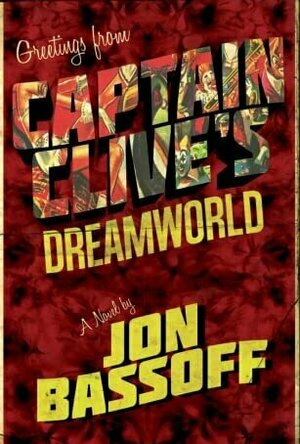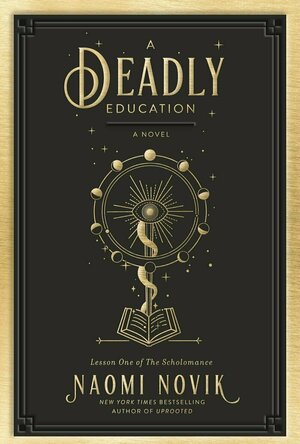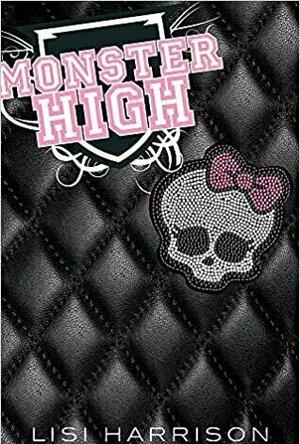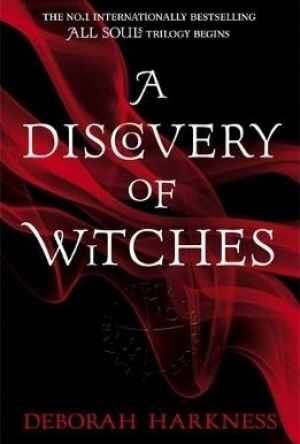
Mechanic Mike - First Tune Up
Games and Entertainment
App
~~> All in one garage game! Fix, upgrade, paint and even get an X-ray test for your car. ~~> Get on...
Heather Cranmer (2721 KP) rated Captain Clive's Dreamworld in Books
Dec 12, 2020
Deputy Sam Hardy is fed up with his life. Everything looks bleak for Hardy. When a prostitute is found dead in a seedy motel room and Hardy looks like he may be the culprit, he is banished to take over the role of deputy in the seemingly perfect town of Angels and Hope. Everyone seems to love this town, and everything is so cookie cutter, but the people never seem to sleep. Young girls are going missing yet the town says the girls never existed. When Hardy begins to pry into this town's history, he puts his own wellbeing in jeopardy.
I will say the plot of Captain Clive's Dreamworld drew me in right away. The pacing is done perfectly, and I kept on finding myself reading as fast as possible so I could learn what would happen next. I was instantly transported to the town of Angels and Hope with Deputy Sam Hardy. I never lost interest at all. In my head, I was trying to work out what was wrong with the town. Everything seemed to be perfect there, but we all know that nothing is ever perfect. While Angels and Hope was created to be a utopia, it was much more dystopian. There were many sinister goings on happening. While I was able to predict some of the plot, it was still interesting to read on to see if I was correct. There are a few plot twists too. Jon Bassoff did a fantastic job making this story come together brilliantly enough to keep it interesting. While the book didn't end the way I wanted, it was definitely an interesting ending for sure. All loose ends were tied up and the story came together very well.
I enjoyed each and every character in Captain Clive's Dreamworld. Each character felt realistic and fleshed out. Sam Hardy was quite the interesting character. I liked reading about his thought process. I felt like I was going through everything he was. Although I thought he would be uncaring, he was quite the opposite. His plight to get answers was quite the journey to read about. The three witches were fabulous antagonists. I could picture each of the three women easily in my mind. They were easy to hate. I loved trying to figure out Mayor Sampson's character. I kept on trying to guess how much he knew and what he'd be willing to do to keep secrets hidden. I enjoyed reading about all the townspeople of Angels and Hope and trying to guess what their guilty secrets were and what their end game was.
Trigger warnings for Captain Clive's Dreamworld include death, murder, suicide, violence, prostitution, sex, child rape, incest, blackmail, gaslighting, threats, drugs, alcohol, and swearing. This is not a book for the faint of heart as it deals with some very dark subjects.
All in all, Captain Clive's Dreamworld is a highly entertaining read with a great cast of characters as well as a great plot. It is definitely not for the faint of heart though as it is quite dark but enjoyable nonetheless. I would definitely recommend Captain Clive's Dreamworld by Jon Bassoff to those aged 18+ who love a dark horror novel with great depth.
-
(A special thank you to Pump Up Your Book for providing me with a paperback of Captain Clive's Dreamworld by Jon Bassoff in exchange for an honest and unbiased review.)

Vizzywig 2017 - Video Editor 4K Multicamera Studio
Photo & Video and Entertainment
App
Winner… MacWorld “Best of Show” Award! Patented... U.S. Patent No. 9,117,483 HD, 4K & 5K for...

Photo2Fun HD - 1-click photo montage
Photo & Video
App
Create photo montages, magazine covers, effects, collages, greeting cards, place text labels or...

Interactive Sketchbook
Entertainment and Education
App
Learn professional techniques, sketch your own ideas, and collect your digital art! Practice...

Baby Outdoor Adventures - Care, Play & Have Fun Outside
Games and Entertainment
App
~~> It’s outdoor adventure time! Join these adorable babies at this fun-filled outdoor camp! ~~>...
Solomon Wendt (30 KP) rated A Deadly Education: Lesson One of the Scholomance in Books
Aug 28, 2021
For those who want the quick recommendation, if you enjoy wizard teens and magic schools, you will enjoy this book. Outside of that category, it is a decent fantasy novel that is worth a read, but no need to go and get right away.
First and foremost, books like "A Deadly Education" have the unfortunate hurdle of separating itself from the magic school genre alpha that is Harry Potter, to which I believe Naomi Novik did really well. Whenever I read such stories, I can't help compare to the Potter series, but the world that Novik builds is such a stark contrast that I quickly forgot about Hogwarts and Muggles and traded in for the Scholomance and mundanes.
The world that Novik builds is dark and untrusting. Inside the school, there are maleficera, or 'mals,' that try to consume the students' mana at every turn. This puts the place on edge, making almost every character paranoid to open anything or even go anywhere without at least one other person with them, usually at a cost. This darker side is refreshing, especially because the magic in Novik's world is hard magic as opposed to the soft magic of other series. To those who don't know the difference, soft magic is that magic just exists and spells come without consequence. Hard, on the other hand, has limits and comes from a source and takes skills and finesse to learn and use them. Any author who takes it upon themselves to make the magic in their world hard magic gives themselves a challenge, something that Novik clears easily.
The other part of the world that is dangerous are the mals that attack students. There are a lot of them, so much to the point there should be a separate book that could be referenced to know what they are fighting. Although your imagination can run wild, some of the descriptions, or lack there of, leave you to fill in a lot of blanks. I'm still not sure if they are shadows and/or goo with various metal attached or part of their bodies. The variety is so immense that you don't encounter the same thing twice it seems. When reading the encounters, it was hard to picture the exact nature of the fight in my mind. However, the sense of danger was ever present throughout the whole book.
The story itself is coming of age, or more so coming of friendship, mixed with a slice of life feel. Although there is a starting event, Orion saving Galadriel for the second time, there is not an overarching plot for the story. It is just to survive and possibly make an alliance for graduation. This is not my cup of tea when it comes to stories as I enjoy seeing a defined goal or enemy that leads to a finale or into the next book of the series. This story does not have that, which seems to lack an overall plot other that "just survive." Even the climax of this story felt a little out of the blue in terms of action, and then is superseded by a social bombshell and cliffhanger for the next in the series.
To wrap and reiterate, I enjoy the world that this story takes place. It is inventive and unique to standout against others within the magic school genre. There was some plot lacking, but is still enjoyable for not quite knowing what is coming around the next corning. This a clearly the first book of series which is not the strongest as its own installment, but definitely has me waiting for the next in the line.
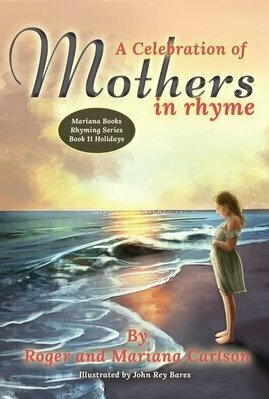
A Celebration of Mothers in Rhyme (Mariana Books Rhyming #11)
Book
Mothers hold a special place in the world. When you think of many of your fondest memories, your...
Children Seasons Rhyming
ArecRain (8 KP) rated Monster High (Monster High, #1) in Books
Jan 18, 2018
This is a book meant strictly for pleasure reading for fantasy and novels alike. While it kept true to the high school novel feel, it also had enough fantasy to make it that much more interesting than just high school girls worrying about losing their boy toys. It was similar to any other young adult novel I have read except for the one factor making it completely different: it revolves around the descendents of monsters. If it wasnt for that, I probably would have hated this book. I have always loved everything to do with fantast monsters and creatures. The fact that Mattel created a doll series about it was cute, but the book made it enjoyable for an audience older than seven years of age.
Quite honestly, I am tired of all the criticism of this book. It is meant to be a light-hearted, moral teaching novel meant for young adults, therefore, it is meant to relatable by teens. All the slang that the students use is how the real world is, people. I am sorry if you dont understand their lingo, but its how kids are, especially high schoolers. They invent words that they think are cool and some tend to catch on. Melodys family is from Beverly Hills. Why wouldnt they have designer clothes? Frankie was born 15 days ago. What else would she wear but what magazines and the media tell her to, which just happens to be designer clothing. As for the celebrity names dropped, this is not in the leagues of Lewis or Tolkien. Few people will read this in 50 years when the current generation doesnt know who Lady Gaga or Justin Beiber is. This was meant for the generation here and now.
This is not a deep novel people. There is no great mission by amazing warriors meant to save the world. The romance is just that: cute teen romance. No sex and no deep involved feeling that are too complicated. If this novel was not grown up for you, then you probably shouldnt be picking up books from the young adult section. Try some Lukyanenko novels and then talk to me. Thanks.
Moving on. The books two main female characters are Melody and Frankie Stein. The description is a bit misleading, however. Frankie and Melody actually dont even really talk to each until the end. Before tragedy strikes, bringing them together, the two are lost in their own little worlds, hardly even concerned with each other. Both girls are focused on making it a new community and high school, while dealing with major crushes and vicious students. Each makes their own friends. Ones are psychotic back-stabbers that need to have cell phone service banned and barred. The others are true and stand behind her even if they dont agree with her.
The characters were adorable, crazy, funny, and had so much well character. It was easy to tell one from another and I absolutely loved reading about them interacting with each other. Most of the novel had me either laughing, or setting the book aside until I could get over my empathetic embarrassment. I found myself sympathizing with all the characters points of view even though none of them know the whole picture like the reader does. Not to mention, sharing Frankies frustration. I was with her 100% even though I kept telling myself her parents way was the safest. How could you not feel frustrated when everyone was telling her to have pride in what she was and the forcing who to hide what she was? Hypocritical much? I thought so.
Now to the only negative thing I have to say about this book: I wanted to continuously shut Melody down. I found it down right annoying that she thought she knew how Jackson (Dr. Jekylls grandson) and Frankie (Frankensteins granddaughter) felt about being outcasts just because she had a nose she considered ugly. Are you kidding me? Really? I thought this was a poor attempt by Harrison to give Melody and Frankie some common ground. Being made fun of because of your nose is nowhere near the devastation of being hunted down because your grandfather was a chemical addict or a stitched together living doll. Oh, I am sure that it was tragic enough for Melody, but how dare she say she understood what it was like. Melody was never in mortal danger for her difference, so please, honey, get off your self-righteous horse.
The main reason I loved this book so much was because it was so distracting. It was such a light and fluffy book about the simplicity that is high school life. It was refreshing from all these novels nowadays where the protagonist is the only person capable of saving the world, their loved, blah blah blah, while the protagonist is some immensely powerful being. Note to writers: that scenario is getting old real quick.
KittyMiku (138 KP) rated A Discovery of Witches in Books
May 23, 2019
A Discovery of Witches is a book about a witch names Diana has encountered a very old and lost manuscript that many others want. Upon being granted access to this book and denying the magic in her that calls her to investigate it with her powers, she returns it, only to find herself being threatened, stalked and in danger due to it only being obtained by her and returned to the library and back to its magical disappearance. The finding of this book however, helps he discover who she is and a new lover, who is a vampire. The odd couple experience a threat and a mystery that they wish to uncover. As well as, an old rule that they now must try to change, no matter the cost
I had really enjoyed reading the first book, and found its quick pace refreshing but also pleasing to read. Though there were many things left for me to wonder about. All the secrets the vampire had and his worries that will be revealed in the second book, I hope anyways, makes me want to just read all the books back to back. Though the book was 576 pages long, I was able to finish reading it in two days. I often didn’t want to tear myself out of the book to do my daily tasks. It’s definitely a page turned with how Harkness was able to describe everything in the book and flush out some character while leaving mystery on what is to come in the next book.
Harkness was able to draw in each of the five senses into her writing. I was able to smell, taste, and feel what was being describe it was easy to get lost and forget easily all that was around me. However, I did find that somethings where a bit odd and would never have paired up, like the smell of cinnamon and cloves. I will have to try to make the combination in my kitchen to see what that might smell like together as I am not one for the smell of cinnamon. I did find the characters to be extremely well put together and often found myself happy when they were happy, as well as sad when they were. I did quite enjoy that A Discovery of Witches has some things that were extremely accurate while still being fantastical. For example, in Wicca or Paganism rituals are done to do witch craft. Spells and such are handed down to members of the family for generations and the holidays match up to what is practiced today. However, the way magic is portrayed isn’t what really happens in our world, or so I know of, but if it was, I can see how Harkness describes it being how it is.
A Discovery of Witches is just an amazing piece of work that will draw you in and keep you wanting more. Though some words can come across odd, as they aren’t used in normal, everyday conversations, it really says a lot about Harkness’s writing style. She is intelligent and it shows in her work with how she describes things and often uses things from our past to put things in our present world in to perspective to pertain to her characters.
I loved how the book has made me think and do some research myself, on different topics, if only to see what was true and what was made up. For example, alchemy is what puts our character in a situation that seems harsh and completely uncalled for by some extremely bad characters. Not knowing much about alchemy, I had to look up just what the photos Diana might be looking at. The author described them so well, I would picture them in my mind and when I looked them up; I was amazed how much close to the actual images Harkness had described. Though, I am on a computer versus in a library with old manuscripts.
Overall, I would rate this book 3 star out of 4 stars. That may seem harsh seeing as it is one of the best books I have read, and I read a ton, but I found that with all the secrets the characters keep from each other and the reader as a whole quite infuriating. I wanted more and find myself here not able to resist the urge of starting the next book. I do hope some things are clarified and revealed; otherwise I will end up being a very upset reader. Harkness’s writing does seem promising to reveal more as the story develops though. A Discovery of Witches is an extremely good book, even with its infuriating secrets, that I would recommend to anyone who loves the ideas of vampires, witches and demons existing in a world alongside us.
